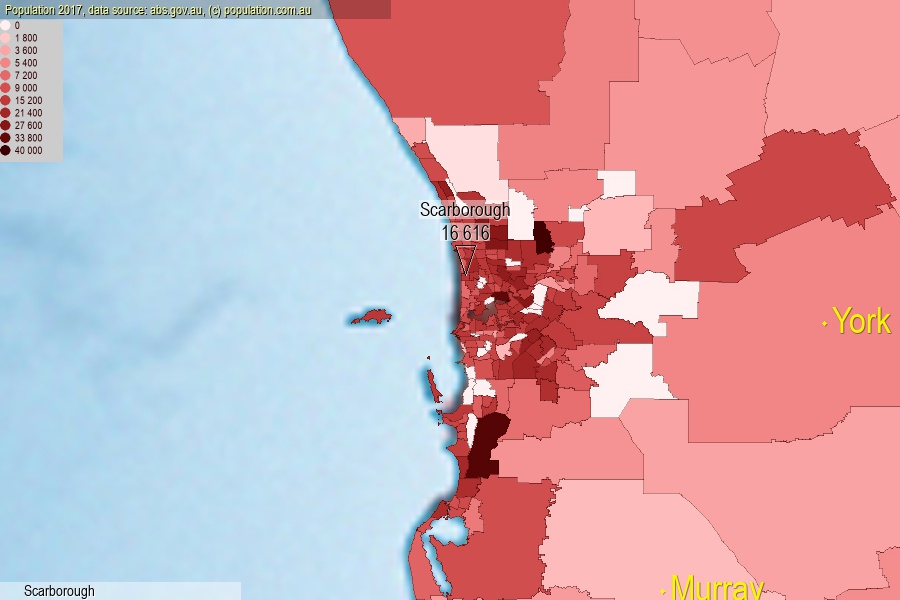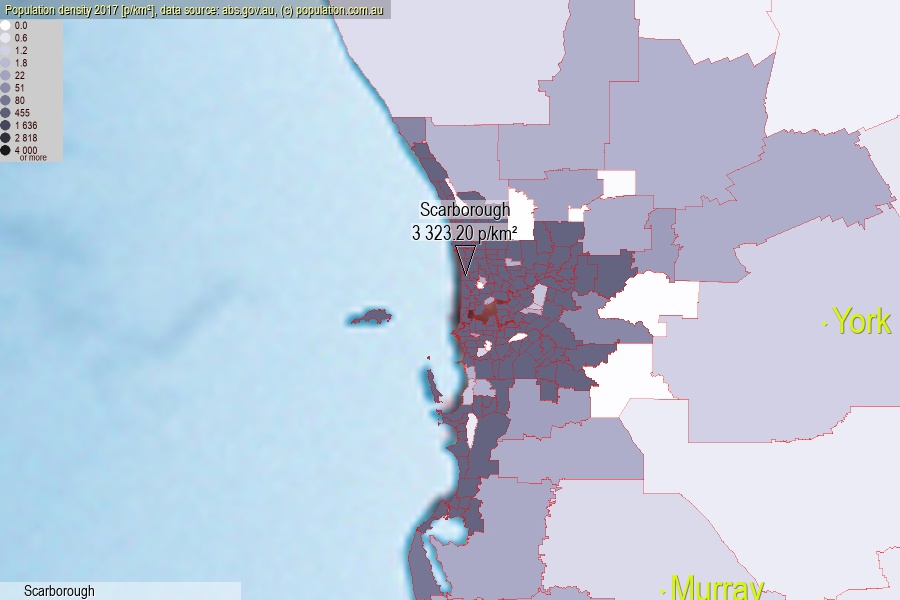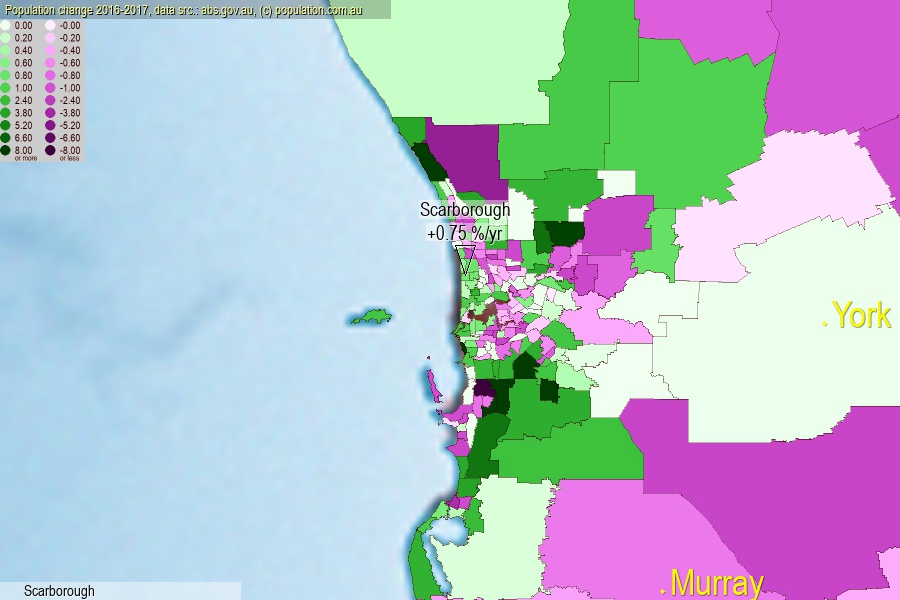 population.com.au
population.com.auLast official estimated population of Scarborough (as Statistical Area Level 2) was 16 616 people (on 2017-06-30)[2]. This was 0.07% of total Australian population and 0.641% of WA population. Area of Scarborough is 5.00 km², in this year population density was 3 323.20 p/km² . If population growth rate would be same as in period 2016-2017 (+0.75%/yr), Scarborough population in 2025 would be 17 634. [0]



Click to enlarge. Scarborough is located in the center of the images.
Population [people], population density [p./km²] and population change [%/year] [2]
View borders » (new window) [4]
[1991-1992] +1.50 %/Yr.
[1992-1993] +0.70 %/Yr.
[1993-1994] +2.11 %/Yr.
[1994-1995] +2.78 %/Yr.
[1995-1996] +1.95 %/Yr.
[1996-1997] +1.65 %/Yr.
[1997-1998] +1.01 %/Yr.
[1998-1999] +0.77 %/Yr.
[1999-2000] +1.87 %/Yr.
[2000-2001] +1.62 %/Yr.
[2001-2002] +1.20 %/Yr.
[2002-2003] +0.43 %/Yr.
[2003-2004] +1.10 %/Yr.
[2004-2005] +0.97 %/Yr.
[2005-2006] +0.85 %/Yr.
[2006-2007] +3.81 %/Yr.
[2007-2008] +3.10 %/Yr.
[2008-2009] +2.70 %/Yr.
[2009-2010] +2.11 %/Yr.
[2010-2011] +2.77 %/Yr.
[2011-2012] +2.56 %/Yr.
[2012-2013] +2.39 %/Yr.
[2013-2014] +0.66 %/Yr.
[2014-2015] +0.41 %/Yr.
[2015-2016] +0.07 %/Yr.
[2016-2017] +0.75 %/Yr.
[0] Calculated with linear interpolation from officially estimated population
[1] Read more about SA2 and Australian Statistical Geography Standard (ASGS) on abs.gov.au
[2] Population data from Australian Bureau of Statistics (Population and density: 2017; change: 2016-2017)
[3] Digital Boundaries: Australian Statistical Geography Standard (ASGS) 2016.
[4] Border coordinates are simplifyed using Ramer-Douglas-Peucker algorithm.